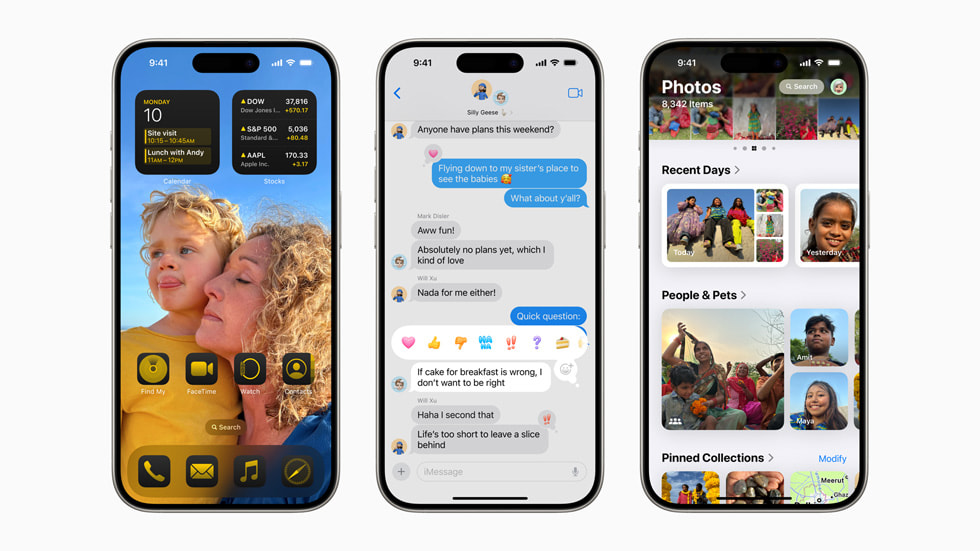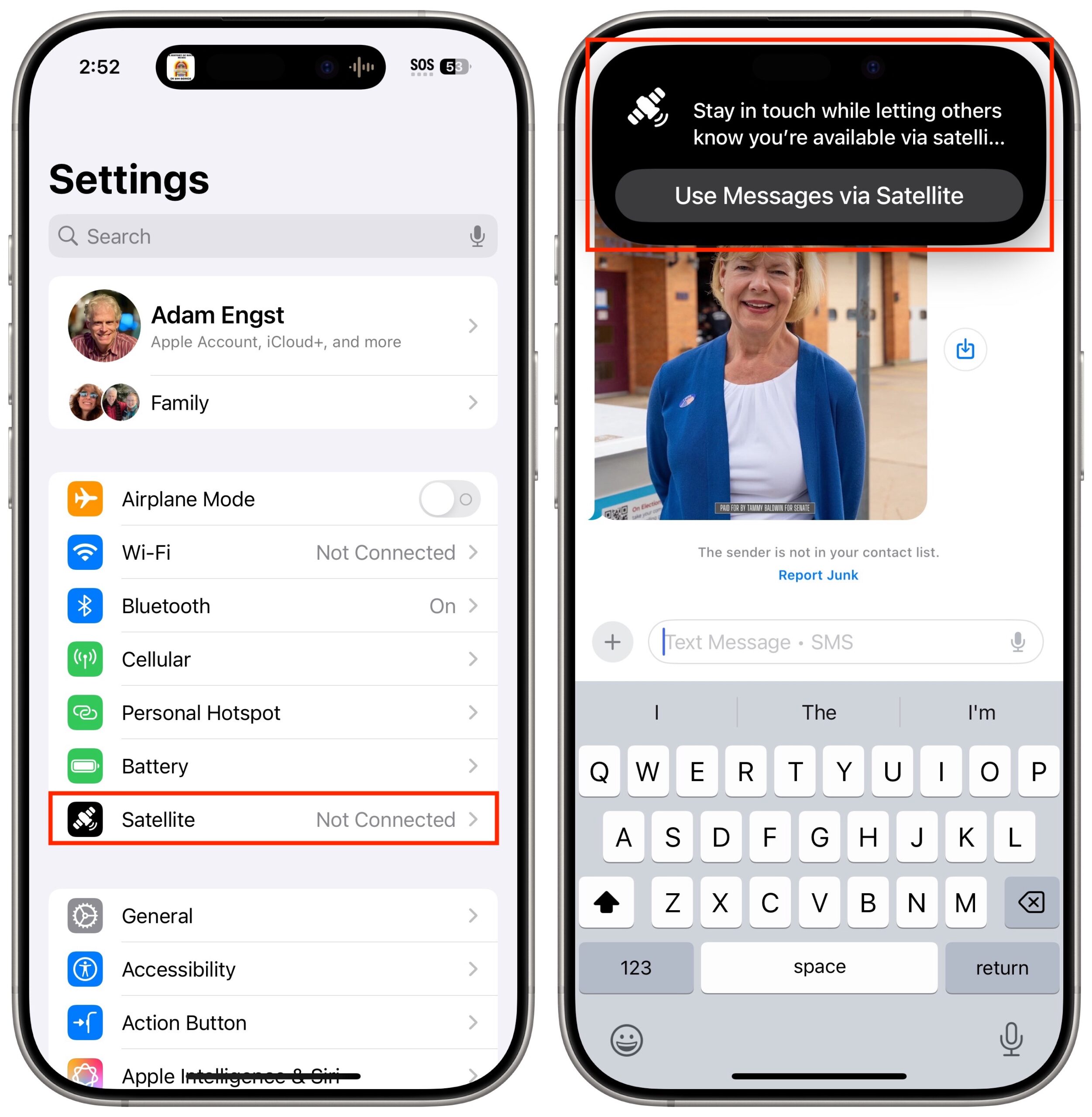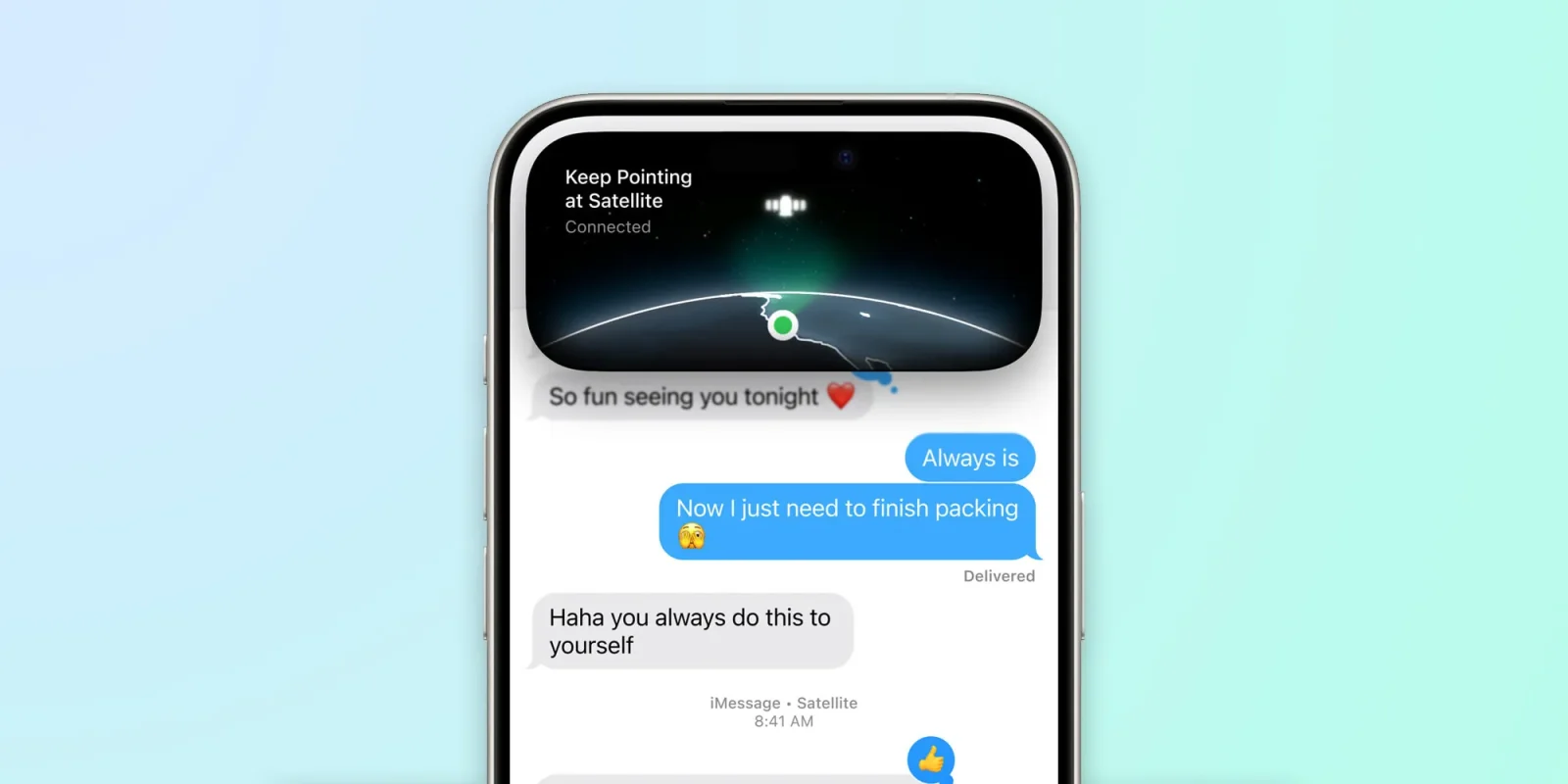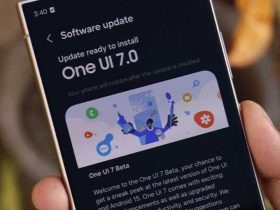If you own an iPhone 14 or later and live in the US or Canada, upgrading to iOS 18 is highly recommended. The new feature, Messages via satellite, can be a lifesaver during emergencies, especially in areas with limited or no cellular connectivity. This service should be part of your disaster preparedness, much like carrying a cell phone in your car in case of an emergency.
Natural disasters, like Hurricane Helene, demonstrate that cell service is not guaranteed, as roughly 75% of cell sites in North Carolina were offline initially due to power outages and transport failures. The service can be vital when other options fail.
Apple is currently offering satellite connectivity for free for two years with the activation of an iPhone 14 or later. This includes Emergency SOS, Roadside Assistance, and Messages via satellite. Apple even extended the free period for iPhone 14 owners by another year, meaning the free service will last until November 2025.
While satellite connectivity is currently only available in the US and Canada, the services are being expanded. Roadside Assistance is offered in the US and UK, while Emergency SOS can be used in various countries including Australia and New Zealand.
Apple’s venture into satellite communication started two years ago with the introduction of Emergency SOS via satellite on iPhone 14. This move marked a significant breakthrough, allowing users to send distress signals even when there’s no cellular service, using satellite technology instead. The system has proven effective, saving lives during the Maui fires in 2023.
Following that success, Apple added Find My via satellite, allowing users to share their location even when out of cellular range. In iOS 17, Apple introduced Roadside Assistance via satellite, helping stranded motorists in areas with no service.

The major development in iOS 18 is the ability to send and receive text messages via satellite, expanding on the previous Emergency SOS feature. iPhone 14, 15, and 16 models running iOS 18 can now communicate via Messages even when there’s no cellular or Wi-Fi connectivity.
Setting this up involves activating the service through the Settings app or Messages, followed by aligning your phone with a satellite signal. Once connected, the satellite icon appears in the top-right corner of the screen, confirming the connection.
Messages via satellite works in areas without cellular service. However, unlike Wi-Fi or cellular, it requires manual activation and a clear view of the sky to connect to satellites. After enabling the service, users need to rotate their phone to align with the satellite to establish a connection.
The service provides a green haze to indicate successful alignment. The iPhone’s Dynamic Island feature (on models with it) shows a green dot and checkmark when connected to a satellite. If the signal is lost, the user must realign the phone to reconnect.
Using Messages via satellite is relatively simple, though it requires patience. Once connected, the iPhone will show whether the user is sending an iMessage or SMS, with both being available depending on the recipient’s device. iMessage is available for iPhone users running iOS 18 or later, while SMS works for non-iPhone users or older iPhone versions. Group chats are not supported via satellite due to system limitations, as Apple presumably doesn’t want the service overloaded.
One significant limitation of Messages via satellite is the character limit. iMessages are restricted to 500 characters, while SMS messages are capped at 140 characters, as per the SMS protocol. Additionally, users cannot send multimedia elements like pictures, videos, or stickers via satellite.
However, basic text messages and emojis can be sent, and voice dictation is available, making the messaging experience less cumbersome despite the restrictions. Messages via satellite can take 30 to 60 seconds to send, depending on the satellite connection, and users must maintain their connection until the message is fully delivered.
During testing, users have experienced mixed success with Messages via satellite. Messages sent through iMessage or SMS often depend on the software versions of the recipient’s device. For instance, some users may not receive satellite messages if they haven’t recently updated their devices.
Moreover, group texts and older iOS devices might prevent seamless communication. The feature is designed to be reliable, but there are occasional glitches in the delivery of messages depending on the user’s location, satellite visibility, and software versions.
Another feature of Messages via satellite is its ability to maintain emergency contact communications. If someone in your Family Sharing group or emergency contacts messages you, their SMS will be delivered once your device connects to a satellite.

However, incoming messages are only delivered once the sender taps “Send via Satellite,” which could lead to delays. Apple also prevents arbitrary people from messaging you unless they are on your emergency contacts list or in your Family Sharing group, offering a layer of security while you’re off the grid.
The satellite connection process is dynamic. Satellites move quickly, so users may need to adjust their phones’ positions regularly to maintain connectivity. Apple’s system provides helpful feedback, including a countdown to the next satellite’s appearance.
While this may be fun during tests, in real-life situations, it can be necessary to adjust frequently in order to maintain communication. Once the connection is made, users can send messages, update their location via Find My, or request Roadside Assistance.
While Messages via satellite might not be something everyone needs daily, it is a powerful tool in certain situations. For those living in rural areas or places with poor cell service, it could be a useful feature during outdoor activities, such as hiking, biking, or volunteering at remote events.
It provides the peace of mind of being able to communicate even when cellular networks fail. However, for natural disaster scenarios like hurricanes, floods, and other emergencies that disrupt the cellular network, Messages via satellite could prove invaluable.
Ultimately, Messages via satellite represent a significant step toward improving connectivity in areas where cellular or Wi-Fi networks are unreliable. It’s not just about staying connected in everyday life, but about being prepared for emergencies and unexpected situations.
Whether you’re hiking in remote areas, biking along rural roads, or facing natural disasters, Messages via satellite offer a lifeline, allowing users to send vital messages and stay in touch when other communication methods are unavailable.
iOS 18’s Messages via satellite feature is a game-changer for users looking for reliable communication in areas where traditional networks fail. It offers the ability to send and receive messages in emergencies, giving peace of mind to those in remote locations or prone to natural disasters.
While it may not be needed every day, it’s an essential tool for disaster preparedness, offering both safety and convenience when traditional cell service is unavailable. If you own a compatible iPhone and haven’t upgraded to iOS 18 yet, this new feature should push you to make the upgrade now.







Leave a Reply